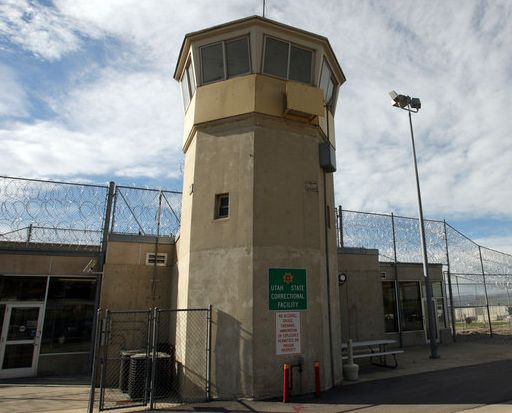Imagine your husband is killed and your son is also shot and permanently injured by a random act of violence. This is the reality for Vickie Walker and how she found help.
Most people would file a civil suit if they were the victim of a violent crime, but what if the perpetrator of the crime had no money? Gary Scheller directs the Utah Office for Victims of Crime, which facilitates compensation for innocent victims of violent crimes. “We are thrilled that we don’t use taxpayer money to operate this program,” he said.
Victims of violent crimes can apply for compensation up to $25,000, with an additional $25,000 for catastrophic medical expenses. Most of the money is paid directly to medical, dental, and mental health providers. The fund can also cover funeral costs, and the department pays for forensic exams in the cases of sexual assault.

So where does the money come from? The program is funded by criminal fines, surcharges, money withheld from inmates with federally funded jobs, federal grants and court- ordered restitution.
Every time someone is issued a traffic citation, or convicted of a misdemeanor or felony, a surcharge is added to the fine. Thirty-five percent of those surcharges go to the Victims of Crime office. The surcharge funds also go to programs such as a safety account for Police Officers Standards and Training (POST), a substance abuse prevention program, a victims of domestic violence account, intoxicated drive rehabilitation, and a children’s legal defense fund.
The surcharge can be as high as 90% of an assessed fine for conviction of a felony or Class A misdemeanor. But the victim repairations money, rather than going to fund city administration or court costs, goes directly to fund programs that have a direct impact in people’s lives.
Although the surcharge goes a long way in helping innocent victims, there is another program that holds those convicted of crimes directly accountable.
Utah State Prison has a federally funded work program called PIE – Prison Industry Enhancement. Stephen Gehrke, UDC spokesman, said, “Not only does it provide employment for qualifying inmates, it teaches them skills they can use when they are released.” Inmates apply for jobs in this program just like they would outside of prison. They prepare resumes and have interviews.
The jobs pay salaries comparable to similar private industries. The difference is in the withholding on the inmates’ paychecks. Eight percent of their pay goes directly to the crime victim reparation office. They also have money withheld if they owe court-ordered restitution or alimony.
Taxes and social security are also withheld. They are encouraged to save the rest for a nest egg to get them on their feet when they are released. However, they are not compelled to save the money they earn.
The Utah State Prison has a wide variety of jobs available. There are printing services, a sign shop, asbestos abatement, construction, demolition for UDOT, furniture manufacturing, clothing and embroidery. At the Gunnison location there is even a program to train wild horses rounded up by the BLM to prepare them for adoption.
Federal grants and court fines make up the rest of the budget for the Crime Victim Reparations Fund. For the fiscal year 2012, the office had $9,684,000 to use to help victims put their lives back together.
Behind the numbers and statistics are stories about real people in crisis. Vickie Walker lost her husband, Jeff, in the 2007 Trolley Square shooting. Her son, A.J., was also injured. She said, “I was at the funeral home and in a panic.” Someone mentioned the victim reparation office to her and, after some research, she contacted them and they stepped in almost immediately to help with the funeral costs and other related expenses.
Vickie feels the Crime Victim Reparations Office was a “huge blessing” during a daunting situation. She became a big proponent of the office and their mission. She started a non-profit organization called Circle the Wagons to help disseminate information to the public about the help that is available.
Along with public presentations about the organization, Circle the Wagons passes out something they call a Can of Comfort. The can, with candy inside, includes a letter from the Walker family about surviving a violent situation and moving on. Printed on the outside is a list of available resources and a 96-hour survival guide.
“People don’t make plans to be a victim. Most people don’t educate themselves about available resources,” Vickie said. Circle the Wagons and Crime Victim Reparation are there to help ease the pain and suffering of those devastated by violent crimes. §






